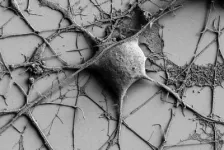Meat and dairy companies slow to commit to net-zero emissions, new analysis finds
Animal agriculture companies contribute to both the physical impacts and public opinion of climate change
2021-03-29
(Press-News.org) The vast majority of the world's largest meat and dairy companies have not made an explicit commitment to achieving net-zero emissions by 2050, finds a new analysis by researchers at New York University.
The study, which appears in the journal Climatic Change, examines the climate impacts of the biggest 35 largest meat and dairy companies around the globe as well as their influence in shaping political responses to climate change.
It is the first peer-reviewed study to assess climate responsibilities of the largest meat and dairy companies.
"Large meat and dairy companies are not doing enough to tackle climate change, and countries are not doing enough in terms of holding them accountable," says Jennifer Jacquet, an associate professor in NYU's Department of Environmental Studies and one of the authors of the study. "In general, their commitments center on mitigating energy use, with little focus on emissions resulting from animal and land use, which make the biggest warming contributions in the agricultural sector."
The assessment provides an in-depth look at the major animal agriculture corporations. While animal agriculture's role in climate change has been well-documented--it is estimated to cause nearly 15 percent of human-generated greenhouse gas emissions--previous analyses have mainly focused on the sector as a whole. The Climatic Change study centered on the largest meat and dairy companies.
The researchers, who included Oliver Lazarus, an NYU graduate student at the time of the study and now a doctoral student at Harvard University, and Sonali McDermid, an associate professor in NYU's Department of Environmental Studies, examined these companies' climate reporting and policies.
Of the 35 companies studied, only Dairy Farmers of America (U.S.), Nestlé (Switzerland), Danish Crown (Denmark), and Danone (France) made commitments to achieve net-zero emissions by 2050. The other 31 largest meat and dairy companies, including JBS (Brazil), Cargill (U.S.), Hormel (U.S.), Fonterra (New Zealand), and Smithfield (China), have not. In addition, there are large discrepancies in how companies report emissions and plan to achieve mitigation efforts, if they do so at all.
"If you look at the individual companies, and how they claim to be working on climate change, their mitigation efforts focus on carbon dioxide, which is a small fraction of their emission across their supply chains," said McDermid. "They should be talking about methane, which is the more potent greenhouse gas, especially when it comes to cows."
The analyses also included projections of these companies' future emissions based on existing practices and compared them to the climate commitments of countries where those companies are based.
The researchers found that, with a continuation of existing practices, two companies will each make up over 100 percent of their headquarters country's emissions targets by 2030: Fonterra in New Zealand and Nestle? in Switzerland. In addition, Arla in Denmark would make up 60 percent of Denmark's total emissions. The authors acknowledge that extraterritorial emissions by multinational companies are not, under the Paris Agreement, applied to a headquarters country's commitments, but considered this analysis a useful exercise in considering the climate responsibilities of individual companies.
The researchers also scrutinized the Paris climate commitments of countries that are home to big meat and dairy companies. Only seven of the 16 countries where these companies are based make explicit reference to direct and indirect emissions of animal agriculture in their climate commitments.
The team also examined the political influence of the 10 largest meat and dairy companies in the U.S. Using a set of 20 questions to assess influence, they found that Tyson and National Beef engage on the issue of climate change more than any of the other 10 largest U.S. livestock companies. But each company has contributed to research that minimizes the link between animal agriculture and climate change and have influenced climate-related policies and discourse.
"The largest meat and dairy companies in the U.S. have spent a considerable amount of time, money, and effort into downplaying the link between animal agriculture and climate change, and into fighting climate policy more generally" says Lazarus. "Documenting their influence in this area is critical to understanding the failure of the U.S. government to adequately address climate change."
The team's analysis also showed the following:
JBS (Brazil) and Tyson and Cargill (both in the U.S.) are the three companies with the largest emissions in absolute terms.
Companies headquartered in New Zealand, Denmark, and Switzerland make up the largest proportion of future emissions as a portion of total country target emissions under the Paris Agreement.
Nine U.S.-headquartered companies combined currently represent 6 percent of U.S. total emissions, which would increase to 9 percent in 2025 if the U.S. complies with its commitments to the Paris Agreement (as of 2015). This small percentage is the result of high overall U.S. emissions as well as weak ambition in terms of emissions reductions.
Eight of the 10 companies have consistently lobbied Congress and the EPA on environmental and climate issues. Cargill has issued 173 quarterly lobbying reports on these issues since 2000, with a peak of 24 in 2010, when the cap-and-trade bill was up for debate. These companies have issued 545 quarterly lobbying reports since 2000 on environmental and climate issues.
U.S. meat and dairy companies act collectively to block climate legislation that might limit production. Six of these groups--the National Cattlemen's Beef Association, the National Pork Producers Council, the North American Meat Institute, the National Chicken Council, the International Dairy Foods Association, and the American Farm Bureau Federation and its state groups--have collectively spent approximately $200 million in lobbying since 2000, lobbying yearly on climate-related issues like cap-and-trade, the Clean Air Act, and greenhouse gas regulations.
"U.S. beef and dairy companies appear to act collectively in ways similar to the fossil fuel industry, which built an extensive climate change countermovement," the authors conclude. "Meat- and dairy-related trade associations have more traditionally been used to lobby for access to grazing lands and fees and manure management regulations, and to influence government regulation, but more recently they have been involved in blocking climate policy that would limit production."
INFORMATION:
DOI: 10.1007/s10584-021-03047-7
ELSE PRESS RELEASES FROM THIS DATE:
2021-03-29
Research into the flower preferences of pollinating moths may have delivered a vital clue to the simple factors needed for the emergence of new species.
Strong coevolutionary relationships between plants and animal pollinators have long been recognised as a potential driver of high rates of speciation in the 275,000 extant flowering plants.
Shifts between pollinators, such as bumblebees, hummingbirds, hawkmoths and bats, often coincide with plant speciation events.
Each of these pollinator "guilds" is attracted by a different set of floral traits such as colour, patterns, scent, shape, and nectar reward, collectively known as a pollination ...
2021-03-29
UNIVERSITY PARK, Pa. -- Why do some people with cold sores around their lips experience painful lesions, while others have no symptoms at all, yet still spread the virus? A new study conducted at Penn State finds that these differences could be due to variations in the way certain strains of herpes simplex (HSV-1) -- the virus that causes cold sores, as well as genital herpes -- activate gene expression in neurons.
"HSV-1 occurs in more than half the global population," said Moriah Szpara, associate professor of biology and biochemistry and molecular biology. "Not only does it cause recurrent problems, such as cold sores ...
2021-03-29
Transition metal perovskites oxides exhibit several desirable properties, including high-temperature superconductivity and electrocatalysis. Now, scientists at Tokyo Institute of Technology explore the structure and properties of a perovskite oxide, PbFeO3, in anticipation of the unusual charge distribution and exotic magnetic transitions displayed by such systems. They report two of the magnetic transitions, with a distinctive transition above room temperature and look into its causes, opening doors to potential applications in realizing new spintronic devices.
The advent of electronics has revolutionized our lives to an extent where it is impossible to imagine going about our day without relying on an electronic device in some form. What is even more remarkable, ...
2021-03-29
In a new publication from Cardiovascular Innovations and Applications; DOI https://doi.org/10.15212/CVIA.2021.0008, Zeyi Cheng, Miaomiao Qi, Chengyuan Zhang and Yanxia Mao from Sichuan University, Sichuan, China, Second Hospital of Lanzhou University, Lanzhou, China and The Second Medical School of Lanzhou University, Lanzhou, China consider myocardial fibrosis in the pathogenesis, diagnosis, and treatment of hypertrophic cardiomyopathy.
The authors review the application of myocardial fibrosis in the diagnosis and treatment of HCM, focusing on research progress and the application ...
2021-03-29
In a new publication from Cardiovascular Innovations and Applications; DOI https://doi.org/10.15212/CVIA.2021.0007, Sharen Lee and Gary Tse from Laboratory of Cardiovascular Physiology, Hong Kong, HKG, China, Second Hospital of Tianjin Medical University, Tianjin, China and Xiamen Cardiovascular Hospital, Xiamen, China consider a case of atezolizumab-induced autoimmune diabetes mellitus presenting with diabetic ketoacidosis.
Atezolizumab, an immune checkpoint inhibitor, is a humanized monoclonal, anti-programmed death ligand 1 (PD-L1) antibody used for the treatment of metastatic urothelial carcinoma that has progressed after chemotherapy. PD-L1 inhibitors can induce type 1 diabetes, and patients can present with diabetic ketoacidosis. ...
2021-03-29
In a new publication from Cardiovascular Innovations and Applications; DOI https://doi.org/10.15212/CVIA.2021.0006, Li Jingxiu, Zhang Fujun, Wei Xijin and Peng Ding from Anhui Provincial Hospital, Hefei, China, Chizhou Second People's Hospital, Chizhou, China, The Affiliated Hospital of Shandong University of TCM, Jinan, China and The Sixth Affiliated Hospital of Guangzhou Medical University, Qingyuan, China consider using three-dimensional Lorenz Scatter Plots to detect patients with atrioventricular node double path caused by interpolated ventricular premature systoles.
A series of related electrophysiology ...
2021-03-29
In a new publication from Cardiovascular Innovations and Applications; DOI https://doi.org/10.15212/CVIA.2021.0005, Nikhil H. Shah, Steven J. Ross, Steve A. Noutong Njapo, Justin Merritt, Andrew Kolarich, Michael Kaufmann, William M. Miles, David E. Winchester, Thomas A. Burkart, and Matthew McKillop from UF Division of Cardiovascular Medicine, Gainesville, FL, USA, UVA Division of Cardiovascular Medicine, Charlottesville, VA, USA, The Johns Hopkins Hospital Department of Radiology, Baltimore, MD, USA, The Heart Center, Huntsville, AL, USA, Intermountain Medical Center, St. George, UT, USA and Carolina Cardiology Consultants, Greenville, SC, USA consider appropriate use of implantable ...
2021-03-29
In a new publication from Cardiovascular Innovations and Applications; DOI https://doi.org/10.15212/CVIA.2021.0001, Zesen Han, Lihong Lai, Zhaokun Pu and Lan Yang from The People's Hospital of Hua County, Henan, China and Henan University of Science and Technology, Henan, China consider the use of nomograms to predict patients with obstructive coronary artery disease.
The authors developed and validated clinical prediction models for the development of a nomogram to estimate the probability of patients having coronary artery disease (CAD).
An individualized clinical prediction model for patients with CAD allowed an accurate estimation in Chinese populations. The Akaike information criterion is a better method in screening risk factors. The ...
2021-03-29
In a new publication from Cardiovascular Innovations and Applications; DOI https://doi.org/10.15212/CVIA.2021.0002, Pei Huang, Yi Zhang, Yi Tang, Qinghua Fu, Zhaofen Zheng, Xiaoyan Yang, Yingli Yu from The First Affiliated Hospital of Hunan Normal University) Chang Sha, China and Tianjin University of Traditional Chinese Medicine, Tianjin, China consider the study of the left atrial function index in cardiovascular disease.
Some studies have shown that left ventricular structure and function play an important role in the risk stratification and prognosis of cardiovascular disease. The clinical application of left atrial function in cardiovascular disease has gradually attracted attention in the cardiovascular field.
There are ...
2021-03-29
Hail severity will increase in most regions of the world while Australia and Europe are expected to experience more hailstorms as a result of climate change, an international review led by a UNSW Sydney researcher has found.
The review study, published in Nature Reviews Earth & Environment, examined the effects climate change will have on hail in the future.
It shows a global summary of hail trends from past observations and projected future trends from simulations and models.
The review led to the general expectation that hailstorm frequency will decrease in East Asia and ...
LAST 30 PRESS RELEASES:
[Press-News.org] Meat and dairy companies slow to commit to net-zero emissions, new analysis finds
Animal agriculture companies contribute to both the physical impacts and public opinion of climate change



